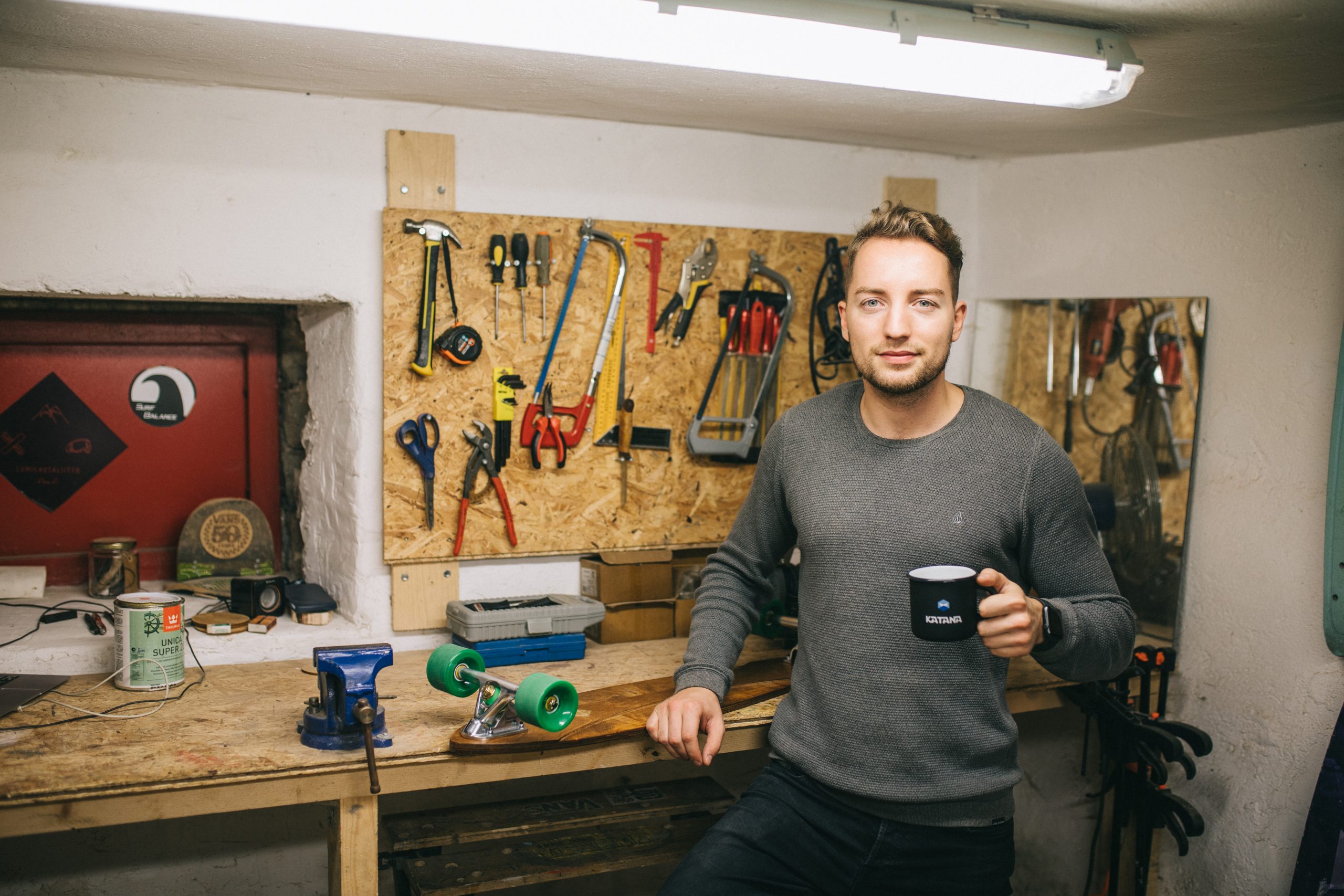What is discrete manufacturing in theory and practice?
Discrete manufacturing for those brushing up on their theory. What is discrete manufacturing and a comprehensive review of discrete vs process manufacturing.
Team Katana

The picture gives you a clue as to what type of manufacturing it is. But there is more to it than meets the eye. This is because products made through discrete manufacturing can also utilize process manufacturing. Sometimes the distinction is not so clear: the theory might tell us it is one kind of manufacturing but it may be another.
Let’s cut to the chase.
Discrete manufacturing is the manufacturing of individual finished products, that can be counted, touched, and seen.
This is one type of manufacturing process that involves parts, components, and sub-assemblies to produce finished products.
Most guides on this form of manufacturing go into examples like the auto and smartphone industry. They are focused on large-scale manufacturing and mass production.
When a modern manufacturer like you wants to brush up on their theory, they might be put off by the lack of relevance to their manufacturing business.
It can be very discouraging as it’s difficult to imagine the concepts as being applied to a scaling business.
That’s why we’re doing discrete manufacturing for the scaling manufacturer, including craft and artisan businesses.
We’re distilling the manufacturing theory into something digestible and applicable for the independent business owners.
So what are we waiting for? Time to get to work!
Discrete vs. Process Manufacturing
So, we have discrete manufacturing on the one hand.
Does this cover all forms of physical goods? Remember, discrete manufacturing only produces countable products.
What is discrete manufacturing in theory?
Well, discrete manufacturing produces physical goods that:
- Come in individual units; and
- Are made up of parts, components, and sub-assemblies.
The finished product is a large assemblage that can be broken down again into its constituent parts. There’s no good reason why you’d want to do that, it’s just one way discrete manufacturing can be distinguished from process manufacturing.
So, on the other hand, we have process manufacturing.
Process manufacturing produces goods that:
- Are made from a formula or manufacturing recipe; and
- Can be packaged into individual units, like bottles.
The finished product cannot be broken down into its ingredients due to the irreversible chemical reactions in the manufacturing process.
Now we’ve learned the difference between discrete manufacturing vs process manufacturing, it’s time to look at some examples.
Examples of discrete manufacturing include:
- Leather bags and accessories;
- Wooden toys;
- Handmade jewelry;
- Furniture inventory;
- Bespoke bicycles;
- Wooden phone cases; and
- Printed T-shirts.
In short, lots of cool stuff. Products made via discrete manufacturing can be big or small, low-cost or come with a premium price tag.
But hang on? What about this other type of manufacturing?
Examples of process manufacturing include:
- Soaps and shampoos;
- Glass and plastic;
- Artisan ice-cream;
- Juices and smoothies; and
- Craft beer and liquor.
This is the essence of discrete vs process manufacturing.
A piece of cake right? Of course if you made cake, that would be an example of process manufacturing.
Discrete manufacturing and process manufacturing can include things made by hand with or without the aid of tools and machinery. This is known as craft production. So, if parts are assembled, then this is a good way to tell if something is made via discrete manufacturing.
Let’s try some examples to get used to this:
Which is which: a craft iPhone case and craft ice-cream?
Of course, the fist one is an example of discrete manufacturing, and the second process.
Now you’re getting the hang of discrete vs process manufacturing. A couple more:
Skateboard bearing oil and a skateboard.
The skateboard is an example of discrete manufacturing, and the bearing oil is a process.
This is an example of how process manufacturing can manufacture additional or related products to use with finished goods from discrete manufacturing.
One more: skateboard wheel nuts.
Of course, it’s discrete manufacturing. Sometimes the end-product of discrete manufacturing can be individual parts or components that go into a finished product elsewhere.
But wait a minute — why are some things classed as process manufacturing and not discrete manufacturing?
You might have noticed glass is up in the process manufacturing category and not the discrete manufacturing category. Glass is a substance and you can change the quantity of it with it still being considered glass.
But what about making a glass ornament. Is this discrete or process manufacturing?
Well this is where the line between discrete manufacturing and process manufacturing can get blurry.
What is discrete manufacturing in practice can seem like it doesn’t follow the cut-and-dry theory. But there is a pattern in it (we promise).
In short, if you produce glass, you do process manufacturing.
If you take the material glass and fashion it into a discrete product, like an ornament, then this is discrete manufacturing.
Another example:
The process manufacturing of skincare cream requires packaging that is made using a combination of process and discrete manufacturing.
The production of the cream is done with process manufacturing. Also, making the plastic for the bottle is process manufacturing.
But assembling the valve, lid, and bottle is a discrete process.
Overall, you are practicing process manufacturing, but the assembly of the finished process is discrete.
We’ll go into more detail about this next.

Discrete Manufacturing in Action
So, we’ve accustomed ourselves to the theory. We’ve fantasized about artisan ice-cream and had a mini pop quiz.
How does this all work in practice?
Let’s take the humble T-shirt printing business. These are actually becoming more and more popular, and the right unique designs have fetched business owners millions of dollars through a Shopify store.
PRO TIP: If you’re on Shopify, check out our blog post to learn how to optimize and manage your Shopify inventory.
Can it fit neatly into the category of discrete or process manufacturing? Let’s see.
So, if you wanted to make such T-shirts, what materials would you need?
Well, the base T-shirt would be a start. This is the blank canvas you will put your designs on.
How will these designs be applied to your shirts?
Well the bare minimum you need are transfer paper and a heat press. You can watch a tutorial on it here.
Although there is obviously a process at play (the irreversible transfer of an image or slogan onto a T-shirt), this is an example of discrete manufacturing. This is because the T-shirt is a distinct unit, unlike glass or plastics when they are being manufactured.
Let’s take one more example: wooden smartphone cases. These are machined from one piece of wood. This is discrete manufacturing, so far so good.
But what about finishing the product with varnish, or embellishments?
Although this involves materials made from process manufacturing, the entire process is still classed as discrete manufacturing. So this is an example of how process manufacturing can add to finished products made by discrete manufacturing.
Discrete Manufacturing Process Flow
So what processes are associated with discrete manufacturing?
The discrete manufacturing process supports the following workflows:
- Make-to-stock (MTS);
- Make-to-order (MTO); and
- Assembly-to-order (ATO).
So, if you do discrete manufacturing and make in bulk, you probably follow a make-to-stock workflow. In other words, you make stock before it is sold through your sales channels. If your product does not require personalizing, or it’s not feasible to make in small quantities, this is the workflow you should follow.
Alternatively, if you don’t keep much stock in-house and manufacture when a customer order comes in (on demand), then your workflow is known as make-to-order.
Therefore, discrete manufacturing for MTS is usually for goods with high volumes and relatively low complexity.
For MTO, it is usually the opposite: low volume, but higher complexity.
Of course, there are some exceptions and overlaps even with this. Some manufacturers may even change their workflows based on factors like seasonal demand.
Another workflow is assembly-to-order where your components or parts are manufactured in or out-of-house. When a customer order comes in you can quickly assemble the finished product. This is a good middle ground and offers the safety of make-to-stock with the flexibility of make-to-order.
Good news!
Katana supports each of the manufacturing workflows.
Regardless of your industry, customer base, and experience, Katana can help you crush your deadlines and build a business to be reckoned with.
How does it work?
Get a demo and find out.
If you manufacture discrete products, your manufacturing process will also depend on your industry and the materials you use.
One option is batch manufacturing.
Instead of making your manufacturing process a mad dash for the finish line, batch processing splits up the assembly of your finished products into discrete (ahem) workstations.
The batch manufacturing process that applies to both discrete manufacturing and process manufacturing.
It’s appropriate to use when the components you need to manufacture require a high setup time, but a short cycle time.
Let’s look at other processes that fit the bill when it comes to discrete manufacturing.
Continuous Flow or Repetitive Flow Manufacturing
This is a manufacturing flow that contrasts with batch manufacturing. Rather than have the work-in-progress being passed between different workstations that do one operation, each finished product is manufactured in one go.
This type of manufacturing is associated with just-in-time inventory management. It aims to maximize throughput using a little inventory as possible.
As its name suggests, continuous flow manufacturing aims to keep production moving along, while cutting down on lead time. It is more suited to make-to-order, as it is more time-consuming per unit on average than batch production.
Artisan and bespoke goods made by discrete manufacturing in a studio workshop are likely to use continuous-flow production.
Order-Based Production
This involves frequently switching your efforts from manufacturing one item to another. Each finished product is manufactured in an individually-defined lot.
Sounds a lot like an MTO workflow doesn’t it?
But another thing with order-based production is that manufacturing can switch between products even when it’s in the work-in-progress (WIP) stage.
WIP can be placed in storage so it can be assembled quickly when orders come in. This could be an advantage if it is easier for your business to store WIP rather than finished products.
Perhaps you need the flexibility of being able to turn your sub-assemblies into anything in your product line at the drop of a hat.
(Hats, by the way, would be an example of discrete manufacturing).

The Final Say on Discrete Manufacturing
By now the distinction between discrete vs process manufacturing should be clear.
Hopefully you could identify the kind of manufacturing you do or are planning to start. You can explain what is discrete manufacturing. You’ll even be able to talk about other kinds of manufacturing at the next modern manufacturer’s get-together in your area!
You may have also picked up some extra tips or came to understand why your production flow is set up the way it is.
Feel free to use apply them at your own discretion.
Part of the joy and challenge of being an independent maker is finding the best way for your organization. Every business is unique, and manufacturers are still finding new ways to do things. That’s why we’re passionate about informing scaling manufacturers, about what is manufacturing.
So until next time, happy manufacturing!
Discrete manufacturing vs process manufacturing: who knows which is more popular…
You do you.
No matter your type of manufacturing, or your workflow.
Katana Cloud Inventory Platform supports all manufacturers and helps them keep promises to customers.
Team Katana
Table of contents
Get inventory trends, news, and tips every month
Get visibility over your sales and stock
Wave goodbye to uncertainty with Katana Cloud Inventory — AI-powered for total inventory control